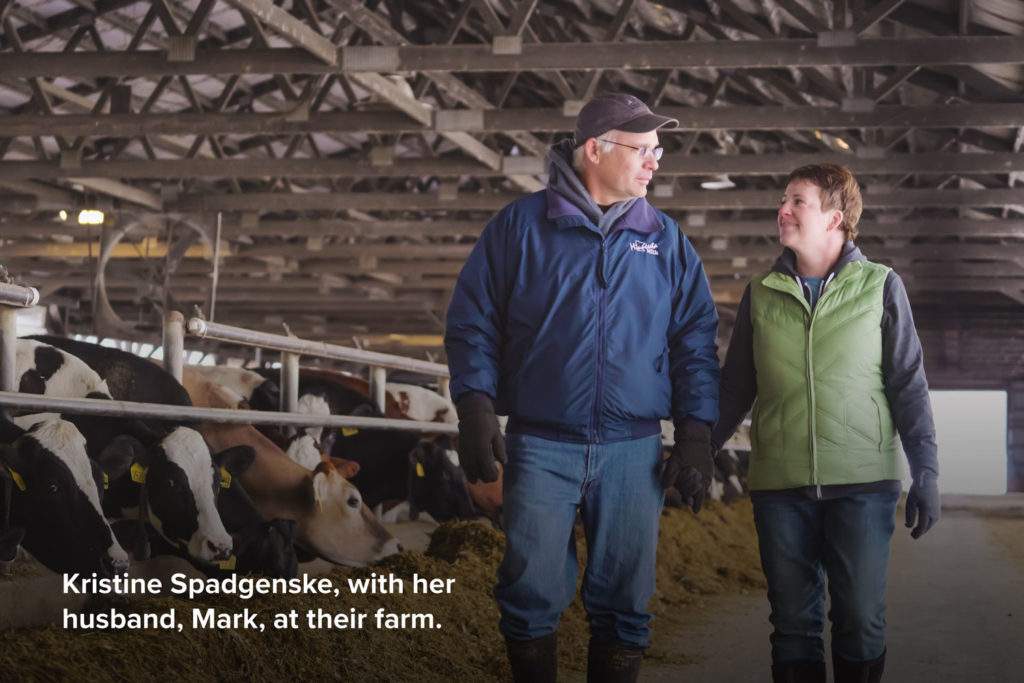“Who left the lights on?” was a common question my parents asked while growing up and it is a common question I ask my own kids. It is hard for us to imagine a time when rooms were lit by candles and oil lamps, houses were heated with fireplaces, and meals were cooked on wood stoves. Today, it is so easy to take electricity for granted.
My husband, Mark, and I dairy farm in a partnership with Mike (Mark’s twin brother) where we milk 350 cows. On our dairy farm, conservation is the heart of everything we do. We are committed to both the care of our animals and the environment. We recycle used water at least three times. We drink the same water that our cows do, so water safety is very important.
We conserve the land by maintaining soil health. We take soil samples to monitor the nutrients in the ground and add nutrients that have been lost. We also have a nutrient management plan where we monitor the amount of nutrients in the manure we spread back on the ground and only spread on land that needs it.
We believe in clean air for everyone to breathe. Collectively, the dairy industry has a goal of becoming net-zero or net positive by 2050. Because of on-farm practices in place for many years, we have already been lowering our carbon footprint and are well on our way to reaching this goal.
In 2014, with help from Minnesota Milk Producers and the Minnesota Department of Agriculture, an energy audit was performed on our dairy farm. Thanks to grants from Minnesota’s Clean Energy Resource Team Program and Todd-Wadena Electric Cooperative we were able to replace various motors and fans, as well as our vacuum pump with variable speed models. We increased the capacity of our plate cooler, where we cool the milk by using well water, and installed LED lighting in the cow barn, calf barn, and farmyard. We also utilize off-peak rates by using Marathon water heaters and while heating our homes.
Conserving energy by reducing electrical and energy costs is not just the “right” thing to do, it also helps our bottom line in an industry where the margin of profit is very small.

